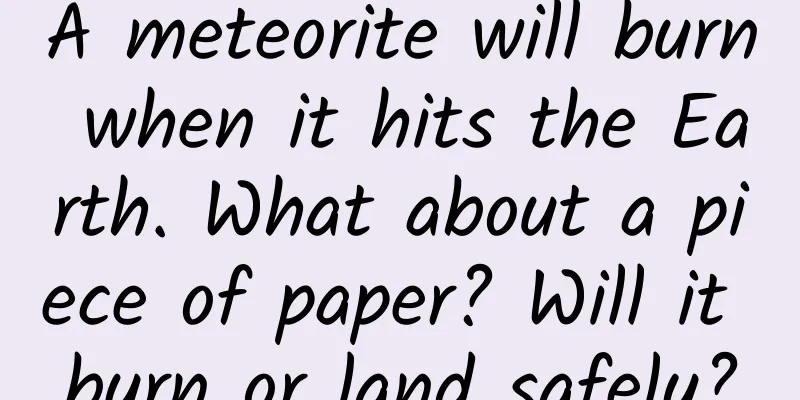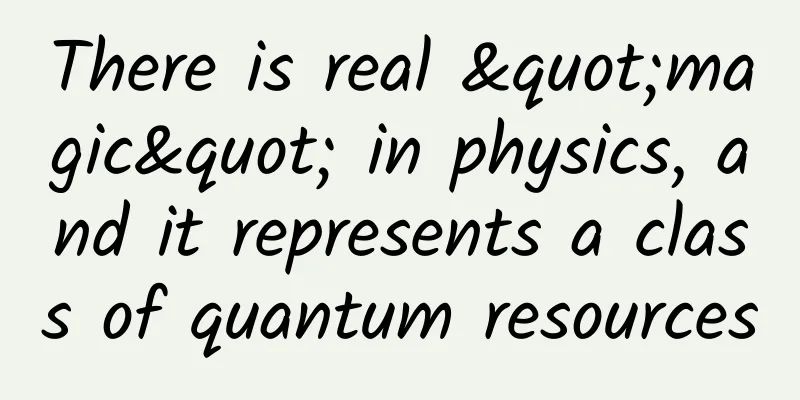A meteorite will burn when it hits the Earth. What about a piece of paper? Will it burn or land safely?

|
According to scientists' estimates, the Earth is hit by nearly 50 tons of meteorites every day. Yes, you heard it right, this data comes from NASA's official website. Since there are so many meteorites falling every day, why don't we feel it? Because there are very few meteorites that can actually reach the ground, maybe less than 50, and the rest are burned up in the friction with the atmosphere. Yes, the earth has a dense atmosphere. When a substance is captured by the earth's gravity and falls to the earth, it will have intense friction with the atmosphere due to its high speed, causing combustion and erosion. This is true for meteorites, and the same is true for the return capsule carrying astronauts, so the heat-resistant coating on the surface of the return capsule is very important. Without the heat-resistant coating, the return capsule will become a closed iron pot. Meteorites and spacecraft will be eroded by friction with the atmosphere, but what about a piece of paper? If you throw a piece of paper from space, will it land safely? Maybe you think that this doesn't need to be discussed, and it would be better to just do the experiment. In fact, it is very difficult to do this experiment. Can't we just throw a piece of paper from the space station? No, because the space station is not stationary. All spacecraft orbiting the earth, including the space station, are moving around the earth at high speed, and their speed is at least above the first cosmic speed, which is 7.9 kilometers per second. Throwing a piece of paper from a spacecraft moving at a speed of 7.9 kilometers per second will also move at a speed of 7.9 kilometers per second. A piece of paper moving at the first cosmic speed will move around the earth like other spacecraft. From this we can see that throwing paper can only be a thought experiment, and we must ensure that the initial velocity of the paper when it is thrown out is zero. A piece of paper with an initial speed of zero will fall toward the earth due to the effect of the earth's gravity, and the falling speed will gradually increase. In the absence of air resistance, the falling speed of all objects is equal, so at first the speed of the paper is no different from that of the meteorite. If we assume that the initial falling height of the paper is more than 400 kilometers, according to the free fall formula, when it falls to a position about 100 kilometers from the surface of the earth, its speed will reach more than 2000 meters per second. At this speed, the paper will instantly burn into ash in the friction with the atmosphere. However, the actual problem is more complicated than this, because there is a process for the earth's atmosphere to change from sparse to dense. We know that the Earth's atmosphere is divided into the troposphere, stratosphere, mesosphere and thermosphere from bottom to top. However, there is no obvious boundary between each layer. Similarly, the density of the earth's atmosphere gradually increases from top to bottom, but there is no obvious boundary between the density of each layer. Therefore, when a piece of paper starts to fall from space to the earth, the air resistance it encounters gradually increases, so its speed will slowly decrease. When it reaches the denser stratosphere, its speed is likely to be relatively low, and it is unlikely to be eroded by friction with the atmosphere. In this case, can this piece of paper land safely? That's not the case. It will still disappear in the earth's atmosphere, but it will not disappear in the form of burning. When paper falls from space into the thermosphere, it will first be subjected to the test of high temperature. The thermosphere is directly exposed to the sun, so the temperature of the thermospheric material is very high, but this does not mean that the air temperature in the thermosphere is very high. If you pour 60-degree water on your body, you will feel very hot, but you will not feel that hot in a 90-degree sauna room, because the density of water is much higher than that of air. Similarly, the air density in the thermosphere is very low, so the overall temperature is not high. But paper is different. Paper is a very dense material. Under the sun, its temperature will quickly rise to more than a thousand degrees, which is far higher than the temperature at which paper will spontaneously combust. However, it will not spontaneously combust because there is almost no oxygen required for combustion. This piece of paper will most likely enter the mesosphere safely, where the temperature is also very high, but the paper will still not spontaneously combust because 97% of the air in the atmosphere is below the stratosphere. The real test comes when the paper enters the stratosphere. As the name suggests, the air in the stratosphere flows horizontally and is relatively stable, so this is also where airplanes cruise. However, sometimes, the air in the stratosphere flows very fast, mainly due to seasonal changes in wind direction. If the paper is not strong enough, it may be destroyed by the wind. If the paper survives the stratosphere, it will enter the troposphere, where the weather is changeable and there are many clouds. Wind, rain, thunder and lightning are commonplace. Under the action of air resistance, the falling speed of the paper has become very slow. It will roll and float in the troposphere, accepting the baptism of wind and rain. However, it is just a piece of paper and cannot withstand too much, so it will be reduced to ashes before reaching the ground. A piece of paper will never reach the ground after all. For more information, please follow the official account: sunmonarch |
<<: Help! Why do dogs always like to eat poop? The reason is not simple...
>>: Technology opens up the world of perception: What happens when the senses are "digitalized"?
Recommend
Is there a health risk when washing baby clothes with adult clothes? The truth is surprising...
Author: Nine-pointed Star popular science author ...
2017 Artificial Intelligence Research Report
Key points: 81% of IT companies are investing or ...
How much does it cost to purchase the Turpan course mini program?
There is no fixed price for the production of the...
Tik Tok marketing promotion, how can one video gain 480,000 followers in 2 days?
Faced with the trend of Douyin, the actual situat...
The entire process of listing on the App Store
App Store listing refers to the entire process of...
How big is the Arecibo telescope, the former world's largest telescope?
When it comes to radio telescopes, the most well-...
Worth collecting! Develop this good habit and you will benefit from it for life!
Every parent hopes that their children will have ...
Why aren’t copycat cell phones dead yet?
Around 2008, a wave of "copycat mobile phone...
New system vulnerability makes iOS 10 easier to break into, Apple says it has started fixing it
Recently, according to foreign media reports, App...
Should I take medicine three times a day with my meals? Many people take it wrong...
When we take medicine, we often see "three t...
Why are the water resources in the Taklamakan Desert far superior to those in other deserts in the world?
The world's largest deserts, such as the 7.77...
What are the functions of the Lanzhou office rental mini program? How much does it cost to develop a rental app?
Nowadays, many companies choose to rent an office...
Four major marketing details of APP make your APP unique
Abstract : 1. Focus on user experience. Today'...
Does anesthesia affect the brain?
《Cotton Swab Medical Science Popularization》 Depa...









